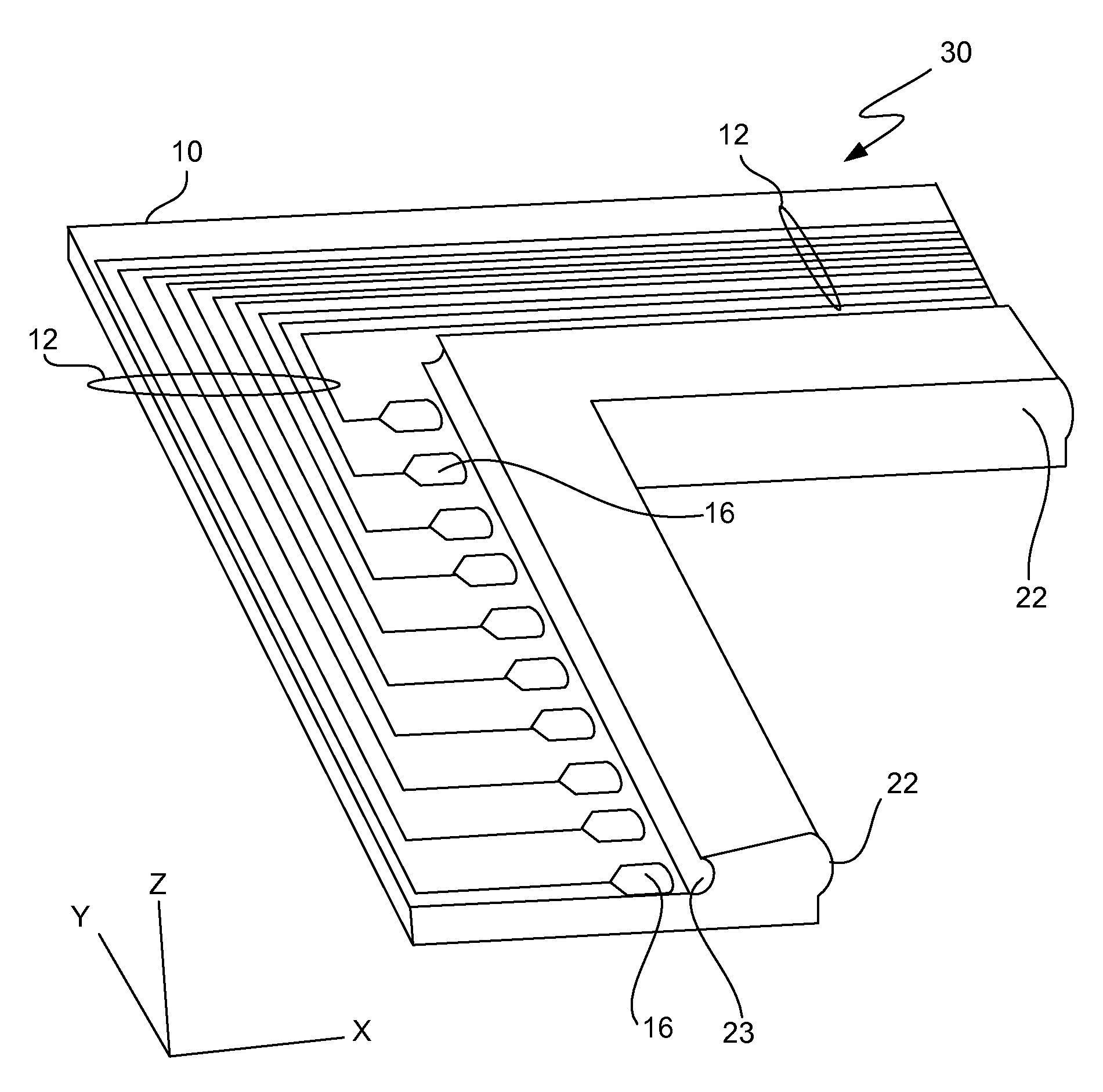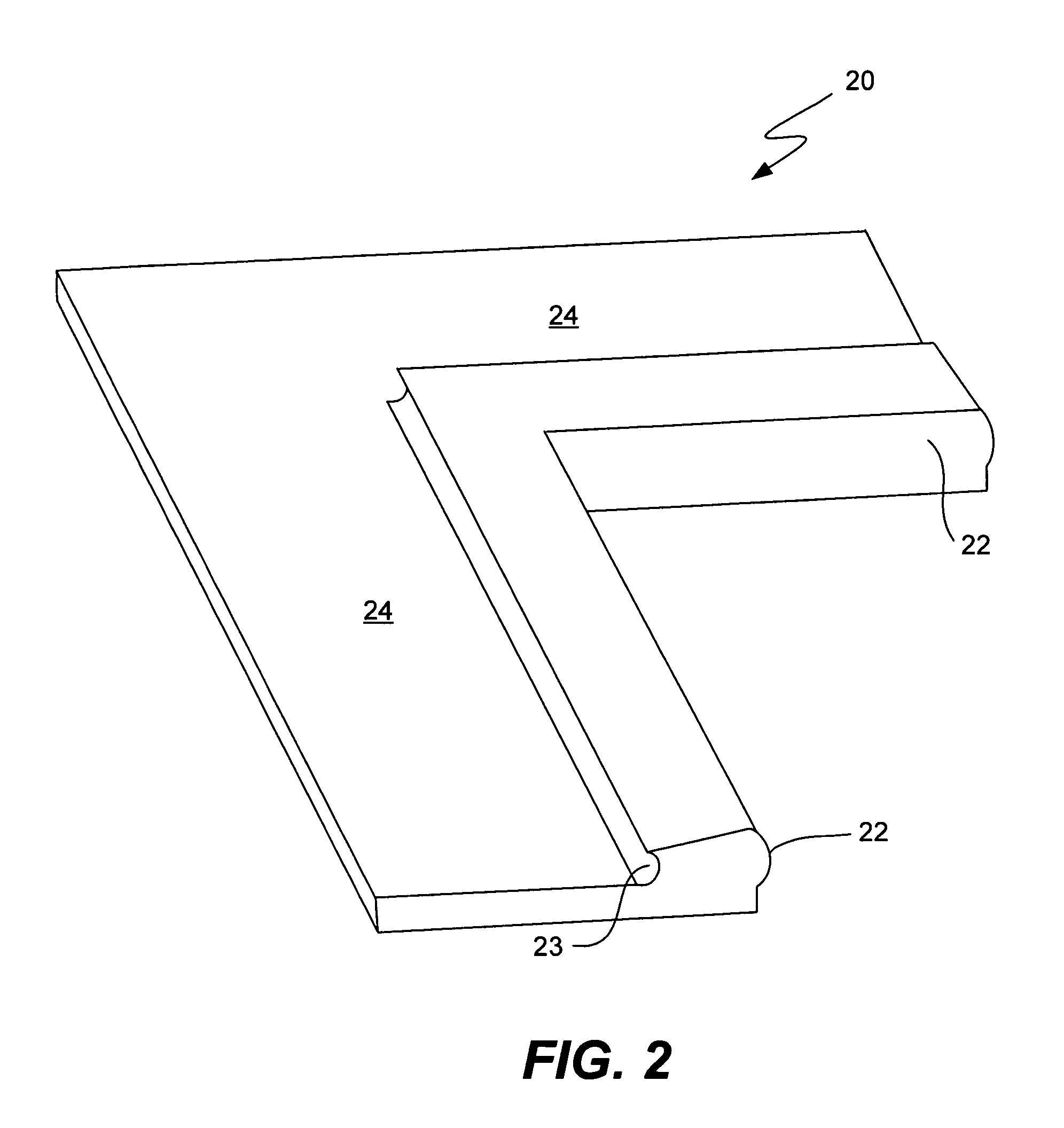Apparatus and method for an improved lens structure for polymer wave guides which maximizes free space light coupling
a polymer waveguide and free space technology, applied in the field of polymer waveguides, can solve the problems of reducing the life of the battery in the device, obscuring the viewing of the underlying display, and reducing so as to reduce the sensitivity of optical coupling efficiency, improve optical coupling, and minimize problems
- Summary
- Abstract
- Description
- Claims
- Application Information
AI Technical Summary
Benefits of technology
Problems solved by technology
Method used
Image
Examples
Embodiment Construction
[0024]Referring to FIG. 1, a polymer waveguide 10 is shown. The waveguide 10 is an L-shaped member including a plurality of cores 12 that extend between an optical coupling end 14 of the waveguide 10 and a plurality of lenses 16 respectively (for the sake of simplicity, not all the cores 12 are illustrated). The optical coupling end 14 includes an expansion horn 14a, which, tapers to a single source. The individual lenses 16 are provided along the inner periphery of the waveguide 10. Each of the lenses 16 is optically coupled to one of the cores 12 which runs the length of the waveguide 10 and terminates at the optical coupling end 14.
[0025]In one embodiment, the polymer waveguide 10 is manufactured using photolithography. A first polymer cladding layer having an index of refraction N1 is formed on a substrate. A second polymer cladding layer, having an index of refraction N2, which is greater than N1, is formed over the first layer. The second polymer layer is patterned to form the...
PUM
 Login to View More
Login to View More Abstract
Description
Claims
Application Information
 Login to View More
Login to View More - R&D
- Intellectual Property
- Life Sciences
- Materials
- Tech Scout
- Unparalleled Data Quality
- Higher Quality Content
- 60% Fewer Hallucinations
Browse by: Latest US Patents, China's latest patents, Technical Efficacy Thesaurus, Application Domain, Technology Topic, Popular Technical Reports.
© 2025 PatSnap. All rights reserved.Legal|Privacy policy|Modern Slavery Act Transparency Statement|Sitemap|About US| Contact US: help@patsnap.com



